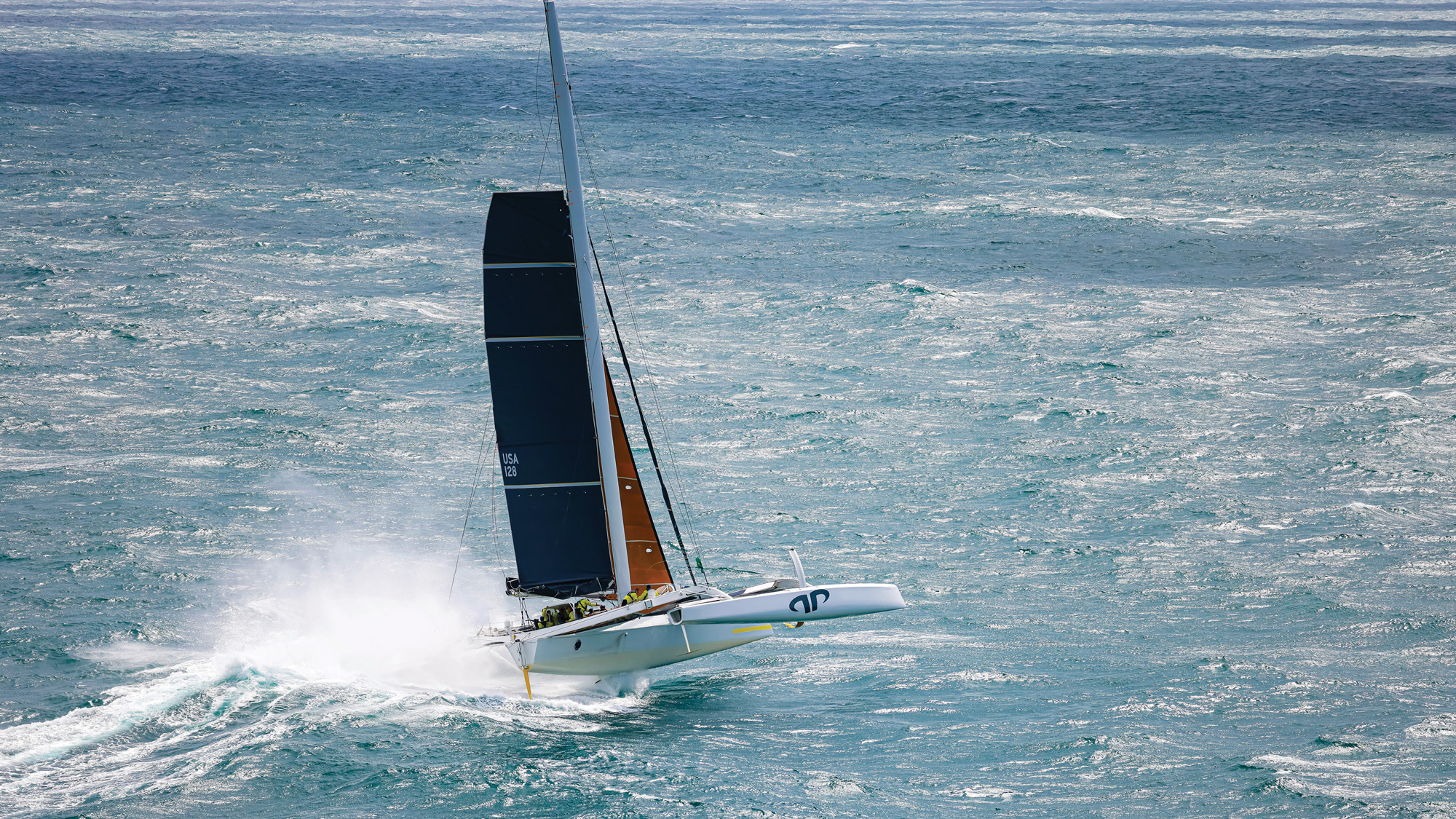Crew member on Charlie Enright’s 11th Hour Racing Team, Jack Bouttell offers his top advice on repairing your boat in the middle of the sea, based on his experience.
In the 50-year history of The Ocean Race (ex-Whitbread/Volvo), Leg 3 of the 2023 edition from Cape Town, South Africa through the Southern Ocean to Itajaí, Brazil, was the longest ever.
Jack Bouttell was crew on Charlie Enright’s 11th Hour Racing Team, and became chief boat fixer over 14,840 miles as the IMOCA suffered a series of breakdowns.
Broken battens in the mainsail, two damaged rudders, damaged foil downlines, as well as a huge rip in the mainsail… time and time again the team had to dig deep for creative solutions to make repairs while keeping on racing.
Many times the team wondered if the breakage would mean retirement from the leg but through ingenuity and sheer determination they worked their way through every problem. Here are Jack’s five best tips for keeping the wheels on your wagon when things start breaking.
1. Use checklists
I’m a big fan of checklists. If you’re building up a spares list from scratch, then note down each department of the boat – sails, navigation, electronics, hydraulics, engine, and so on – and what you think could go wrong.
At the end of every leg of The Ocean Race we’d debrief not just what happened on our boat but if there have been breakages on the other boats in the fleet. Then we’ll make sure we cover off those areas too, and do our best to have a solution for our rivals’ problems as well as the ones we experienced.
2. Safety priority
It’s important to divide every kind of breakage into two categories: safety or performance. Safety is always the priority and your spares and tool kit needs to have solutions to address all the potential problems that could put the safety of the crew at risk.
Once you’ve got those priorities covered, you can think about the performance priorities and build your spares list to cover some of those areas. For dealing with breakages at sea it’s the same mindset, a safety issue for the yacht or crew must be dealt with immediately and you have to forget about performance.
For a smaller breakage ask yourself: can we finish the race without a repair? What is the most opportune time to repair, to lose the least distance, and can we last until then without repairing the problem?
Article continues below…
Expert tips: how to sail multihulls downwind in big breezes
Pushing fast multihulls downwind in gnarly conditions can be a hazardous business. Knowing how hard you can push, and when…
5 top tips: Sailing upwind in survival conditions
Across 45,000 miles of steering around the world on the Clipper Race, sailing upwind safely in survival conditions becomes routine.…
3. Tailor your spares list
The longer you sail with your particular boat, the better the experience you have for knowing what’s important to keep in your tool and repair kit. If you know what typically tends to break, you can build up a spares kit that’s very specific to your boat.
As you gain experience you also learn what you can afford to leave behind, to save space and weight on board. Our spares kit got smaller throughout the last Ocean Race, but then we had a very different list for different legs of the course.
Headed into the Southern Ocean you’ll need a lot more contingency and spares than a coastal race in the Mediterranean or even a Fastnet Race, because you’re close to shore and have the option to stop somewhere.
4. Get creative
Sometimes there’s no obvious solution to the problem in front of you. We had this on the Southern Ocean leg when the tack of the mainsail ripped off at the first reef. It’s one of the highest loaded areas of the sail and just putting a patch of sticky-back over the area was not going to do anything for very long.
We didn’t have anything on board, no sewing machine. So we asked ourselves how we were going to fix it? After some thinking we decided to go for some carbon plate, cut it up into rectangles and bolted the carbon plate through the mainsail. Adapting a boatbuilding solution to solve a sail repair problem actually worked amazingly well.
5. Spares must-haves
Carbon plate is one of the must-haves in our repair kit, in various thicknesses for different applications. It’s good to have a few shapes, little disks and a few squares, so if a padeye pulled out of the deck you could use it as a backing plate or to help plug a hole.
We always carry Sikaflex because you can glue pretty much anything even when it’s wet. Sticky-back sail cloth material can be useful although it’s hard to make it stick when wet, so I take plain sail cloth material and then use Sikaflex to glue it to the sail as and when needed.
Lengths of Dyneema lashings are always useful, and for stitching sails I have a push/pull hand-sewing tool so you can do all the stitching from one side of the sail. For electronics, the big fail is fuses, and if you have hydraulics you’ll probably want oil in case there are some leaks. For engines, impellers and alternator belts are your biggest must-haves.
 If you enjoyed this….
If you enjoyed this….
Yachting World is the world’s leading magazine for bluewater cruisers and offshore sailors. Every month we have inspirational adventures and practical features to help you realise your sailing dreams.Build your knowledge with a subscription delivered to your door. See our latest offers and save at least 30% off the cover price.






